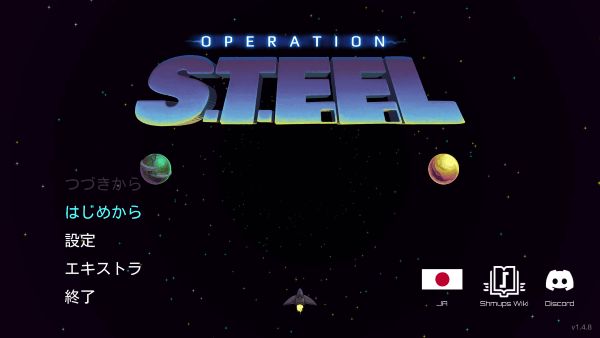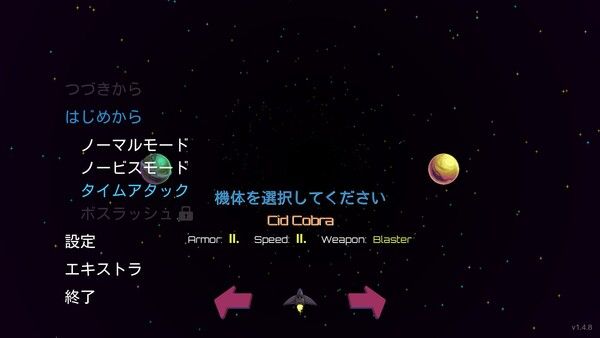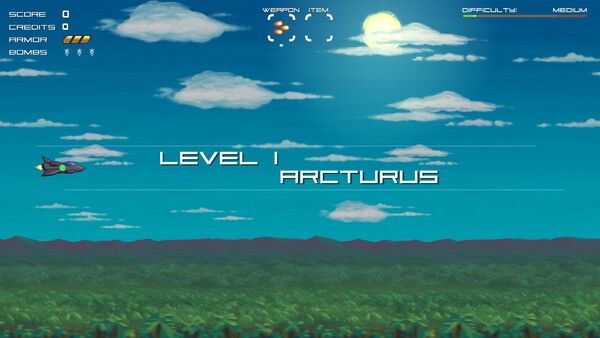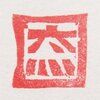🌟 Operation STEEL JA Translation Postpartum
2024年 10月 15日

(2022) Operation STEEL (Undermog Games)
I’ll be honest—I don’t like the term “postmortem” for games. It’s not like Operation STEEL has died or anything. You can still find it right here on itch.io, here on Steam, or the Switch eShop in your local region. It’s still the same horizontal STG with rogue-like elements as it was when it was first released, and it still has the same Japanese text that it had ever since I translated it from English. So, instead of using a metaphor of death, I thought I’d go for something more violent, more cheerful, with a metaphor of birth instead. Hence, “postpartum.”
I want to describe how I worked with the dev BB to translate the game, as well as some of the decisions I made and challenges I faced in the translation. It took me a long time to get started writing this because I was dwelling on a few things that I would have liked to do better, but I guess that is exactly the purpose of writing something like this. Well then, let’s get started.
# Collaboration with BB
We used a Google spreadsheet with columns for string ID, English text, Japanese text, and notes for the dev BB to give me context about the source strings or for me to inform BB about my choices about the translated strings. I didn’t need to think about integrating the strings into the game, which was convenient, and we could both look at the sheet in real-time as we discussed things in a Discord text chat.
Early in the process, BB sent me screenshots or crops of menu text using the latest data in the spreadsheet, and I adjusted line breaks or shortened the strings accordingly. BB responded very quickly to chat messages, which made things go very smoothly. Later on, BB sent me an early build that I could test on my computer, and we continued to discuss and update the translations via text chat and the spreadsheet. This rapid communication throughout the localisation work was energising, and there was a really nice feeling of collaboration—this is something that I look back on very fondly even after all this time, and it is one of the main reasons why I wanted to write this piece.
# The nitty-gritty of the translation
Translation always involves hundreds of choices and there is not always a single correct choice in each case. The key is to commit to the choices that you have made and aim to be as consistent as possible. Here are a few examples of the choices that I have made, along with some alternatives or some things that I could have done better.
# Main menu text
Translating the main menu can be a contentious issue (not to go into too much detail, but a few years ago, there was a little online brouhaha about the choice of words for the Japanese translation of the main menu options in a big-budget game). Action-heavy games, particularly those that have a strong “retro” or arcade-focused concept, tend to keep their menus in English (even when they are originally made in Japanese). I don’t think this is an iron-clad rule though—when done with care and intent, translated menus can add flavour to the game and express its character more fully.
In any case, I decided to translate all of the main menu text in Operation STEEL into Japanese for two reasons:
- Players can toggle the language between English and Japanese with one button in the main menu, and so I wanted to give instant feedback for this button (in addition to the flags in the bottom right swapping places).
- The main menu had multiple sub-menus, and I thought it would be easier for Japanese-speaking players to navigate all of these menus if they were all translated.

Another possibility would be to leave all the menus in English and add a small bar at the bottom of the screen with a description of the currently selected menu item in the currently selected language (as can be found in many other games), but I thought that would require quite a lot of extra dev work, so I didn’t go with that in the end.
# The eternal struggle of the line as a unit of writing
In any language pair, it is often a challenge to fit the translated text within the length of the line (especially for short strings that do not allow for any line breaks), but there can be an extra challenge in Japanese regarding where to put line breaks. Even if the game engine is designed to automatically wrap words in long strings of text (in English), there are certain rules about characters that must not appear at the beginning of lines including small characters like ゃゅょっ and punctuation marks such as 」。、 (you can read more about these rules here). Not all game engines account for those kinds of rules, so there is often a need to include manual linebreaks. With Operation STEEL, I needed to guess the lengths of lines while I worked, but I soon got used to how many characters I could fit into each line thanks to BB rapidly sending me screenshots of the relevant string after I had updated the translations in our spreadsheet.
# Regret #1: fonts
One thing that I regret about the main menu is that I should have looked for a better Japanese font for the menu text. I wanted to get a futuristic kind of font to suit the style of the game, but in the end, I couldn’t readily find a free font with suitable character coverage that looked the part. I regret it quite a lot because I’ve seen people express their disappointment over seeing other games featuring a general-purpose font (or worse, a font not intended for use with Japanese text; see the paragraph below) in their Japanese translations.
Another thing about fonts, as an aside: Sometimes, games might use a single font for Chinese and Japanese text but this is a big no-no—there are subtle differences between Chinese and Japanese in the structure of certain characters, and these differences are immediately noticeable to anyone familiar with either language. In the opinion of myself and many others, it would have been ideal for different codepoints to be assigned to Chinese and Japanese characters, but Han unification in Unicode meant that similar-looking characters get the same codepoint in fonts, and so people need to create and use separate fonts for Chinese, Japanese, and Korean (CJK).
# Other system text: keeping text untranslated, and translating from English to… English?
Just like with main menu text, it is sometimes better to keep in-game text in English when translating action-heavy games. The HUD text is straightforward and similar to other games in the genre, so I kept it in English for this game as well.

I didn’t always keep the English text exactly the same, though. For example, the English version has a small message saying “Map piece detected!” after clearing a stage for the first time, and I decided to “translate” that into “New map piece!” for the Japanese version. The message text is very small, and I thought it would be hard to read if I translated it into Japanese while keeping the text the same size (another possible approach would be to adjust the text size for the message in the Japanese version and translate it). This particular string wasn’t originally listed in the spreadsheet, and I ended up prodding the dev to adjust it in the Japanese version so that it might be easier to understand. I do wonder if it was patronising of me to make this change, and whether I really needed to focus on this one string among other untranslated strings (more on that later).
Another aside: I’ve done a similar thing of changing one Japanese word into another Japanese word when translating from Japanese into English as well. I won’t give the specific details so as to protect the innocent (it’s me! I’m innocent!), but in another game, I basically did something like translating omusubi as onigiri—they both mean “rice ball,” but the latter has more currency in English than the former (also, let’s say there were circumstances that made it more appropriate to use a loanword than to just translate it as “rice ball”).
# Regret #2: item names and shop strings
In the end, we left the items and the shopkeeper’s banter in English, but I wonder if this made it harder for Japanese-speaking players to enjoy the game. The item names that appear beside in-game item pickups and in the shop between stages are displayed in rather small text, and so I thought it would be hard to read if I translated the names into kanji, and the names wouldn’t be very cool-sounding or readable if I just translated them into katakana either. But I knew that making the text size bigger would require a lot of work to change the shop screen layout, and so I didn’t end up prodding the dev about it.
# Ending text
Operation STEEL features a handful of references to some of the classics in the genre, such as the stage selection with branching paths echoing the Darius series, or the fiery dragon-like things that move in graceful arcs over lava à la Gradius II. So, I decided to put in my own little reference in the translation as well. One of the endings includes the phrase “The battle has been won,” and so I seized my opportunity to use an equivalent phrase 戦いは終わった・・・ (“the battle is over…”—I even used the same punctuation at the end) that appears in the ending of Dodonpachi Dai-ou-jou (though this is a vertically scrolling STG rather than a horizontal one like the games that Operation STEEL pays homage to). That was a lucky coincidence!
# Conclusion
Game translation involves a balancing act between the limitations present within the game (and the feasibility of changing or mitigating these limitations through extra coding), the expectations and needs of players, and available resources (namely, time and budget), but things can go more smoothly with rapid iteration, close communication, and a bit of luck.

